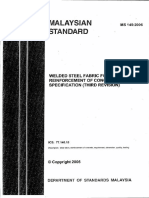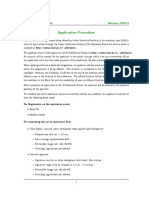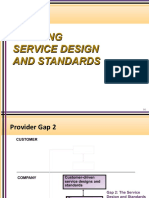0% found this document useful (0 votes)
84 views31 pagesPrinsip Dan Aplikasi Dari: Pavement Management System (PMS)
The document discusses pavement management systems (PMS) and their principles and applications. A PMS is a set of tools that helps decision-makers maintain pavements in a serviceable condition over time. It involves collecting data on road networks, evaluating pavement conditions, predicting deterioration, and determining maintenance and rehabilitation needs and budgets. The PMS process aims to minimize long-term costs and obtain good value for maintenance funds.
Uploaded by
Raisa AzzahraCopyright
© © All Rights Reserved
We take content rights seriously. If you suspect this is your content, claim it here.
Available Formats
Download as PDF, TXT or read online on Scribd
0% found this document useful (0 votes)
84 views31 pagesPrinsip Dan Aplikasi Dari: Pavement Management System (PMS)
The document discusses pavement management systems (PMS) and their principles and applications. A PMS is a set of tools that helps decision-makers maintain pavements in a serviceable condition over time. It involves collecting data on road networks, evaluating pavement conditions, predicting deterioration, and determining maintenance and rehabilitation needs and budgets. The PMS process aims to minimize long-term costs and obtain good value for maintenance funds.
Uploaded by
Raisa AzzahraCopyright
© © All Rights Reserved
We take content rights seriously. If you suspect this is your content, claim it here.
Available Formats
Download as PDF, TXT or read online on Scribd
/ 31





























